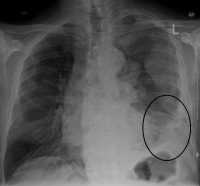 MedicalResearch.com Interview with:
Prof. Dr. Holger Lode
MedicalResearch.com Interview with:
Prof. Dr. Holger Lode
Clinical Immunology, Pediatrics
University of Greifswald, Greifswald
Medical Research: What is the background for this study?
Response: Neuroblastoma is a cancer in childhood with one of the highest death rates. Standard treatment is already very intensive. It includes chemotherapy, surgery, radiation, high dose chemotherapy followed by autologous stem cell transplantation. However, the progress made in improving survival rates is still poor.
The use of an immune-modulatory treatment with a neuroblastoma specific monoclonal antibody ch14.18 (100 mg/m
2 /cycle) in combination with cytokines and 13cis retinoic acid (13 cis RA) has shown benefit for patients with this disease [1]. This antibody targets ganglioside GD
2 abundantly expressed on neuroblastoma with limited to no expression on healthy tissue. Low expression of GD
2 on pain fibers is associated with an on-target side effect of the treatment, which is the induction of neuropathic pain. Approval of ch14.18 (dinutuximab) for the treatment of children with neuroblastoma has been provided by FDA.
In Europe, ch14.18 was not available for a long time. There were several reasons why the antibody in the US could not be given to children in Europe. Therefore a new development of this side of the Atlantic was initiated following the remanufacturing of the antibody in CHO cells [2] (dinutuximab beta) and was made available within clinical trials of the SIOPEN group. The SIOPEN group is a network of leading European pediatric oncology centers to improve outcome for children with neuroblastoma (http://www.siopen.org), similar to the COG (children`s oncology group in the USA; https://www.childrensoncologygroup.org).
Following the recloning procedure, ch14.18/CHO was first evaluated for safety in a Phase I study [3], which confirmed the tolerability and showed activity at a dosing regimen of 20 mg/m
2 given by 8 hour infusions on 5 consecutive days. Dinutuximab beta is further developed by Apeiron Biologics.
The current way to apply 100 mg /m
2 / cycle is by 4 short term infusions of 25 mg/m
2/day each over 8 hrs on 4 consecutive days. The entire treatment consists of 5 cycles. The drawback is that STI is associated with a high amount of intravenous morphine required to make this treatment tolerable for patients. Also the rate of inflammatory side effects observed is substantial.
Clinical observation indicates that if patients treated by STI suffer from pain despite analgesic treatments, a decrease in speed of antibody infusion improves this on target toxicity. Therefore, we hypothesized that significant prolongation of the time of antibody infusion will improve tolerability of that treatment, but at the same time maintains clinical activity and efficacy in high risk neuroblastoma patients.
(more…)



















